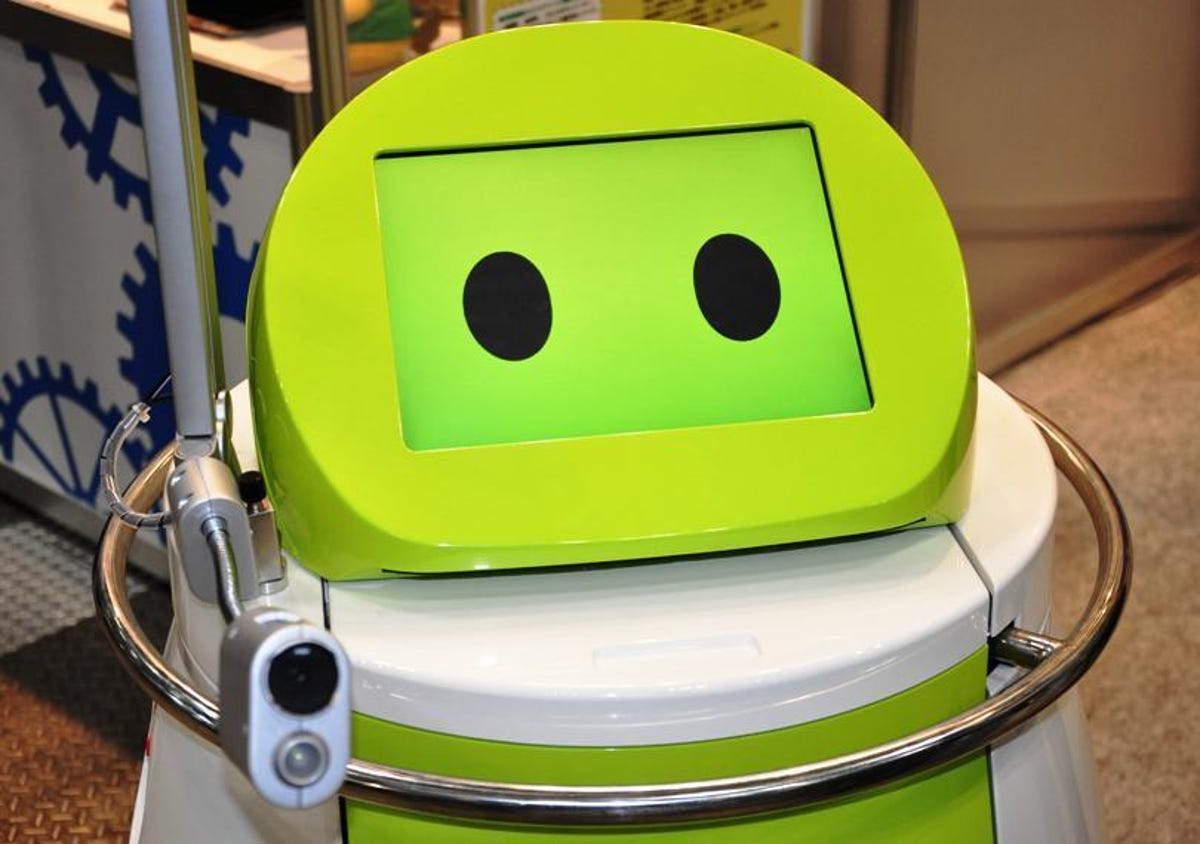iRex readies robots for your retirement (pictures)
Robots for elderly care were part of a large variety of machines on display at the 2013 International Robot Exhibition in Tokyo.

Terapio
As its population ages, Japan is trying to get robots to perform more and more tasks that were once for human workers only. Elderly care and medical robots grabbed the spotlight at the 2013 International Robot Exhibition (iRex) in Tokyo, the largest edition of the trade show to date.
Terapio is another nursing robot designed to ease some of the burden on hospital caregivers. Currently undergoing trials, it can support nursing staff by transporting medical records and equipment, as well as serving as an input device to record data such as patient blood pressure.
Unimo
Tokyo-based Nano Optonics Energy showed off Unimo, a deluxe wheelchair controlled by joystick and accelerometer. The Unimo rolls on treads with a top speed of about 3.7 mph and carries users up and down hills, through sand and snow, and on grass. It sells for about $10,000 in Japan.
Robohelper Sasuke
Robohelper Sasuke by Muscle Corp. is designed to help human caregivers move patients. It has two arms that can be directed to gently lift a fabric sling holding the patient and then place him or her in a wheelchair.
Rapiro
Successfully funded on Kickstarter earlier this year, Shota Ishiwatari's Rapiro is a low-cost Raspberry Pi-compatible robotic kit that has expressive LED eyes and 12 servomotors.
Many hands
Kawasaki's high-speed B Series industrial robots go through the motions with a mock car assembly line at Tokyo Big Sight, the venue for iRex 2013.
Stainless steel
Also featured in Kawasaki's large-footprint display at iRex, the MSR is a stainless steel, seven-jointed arm designed for medical and drug applications.
Mimamori
The Mimamori robot is a stripped-down telepresence machine with just the basics you need to keep an eye on a loved one. It can roll around and automatically avoid drop-offs while users can communicate through its camera and speaker. It will also recharge itself automatically when its battery runs down after about two hours.
Lighbot
NSK's Lighbot is an obstacle-avoidance robot for blind and infirm people. Like a seeing-eye dog, it automatically senses which way a user wants to go and skirts around obstacles in the path. At 22 pounds in its most compact form, it's light enough to be carried on escalators and up stairs, according to NSK.

